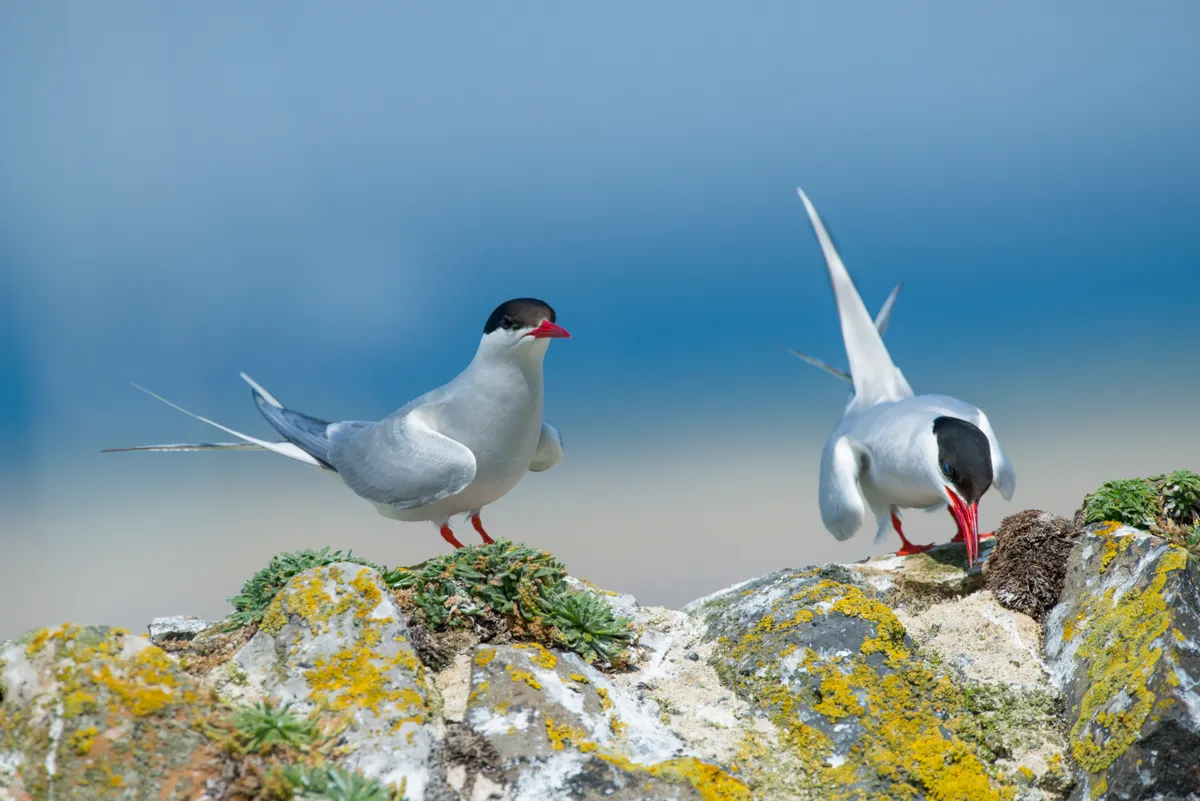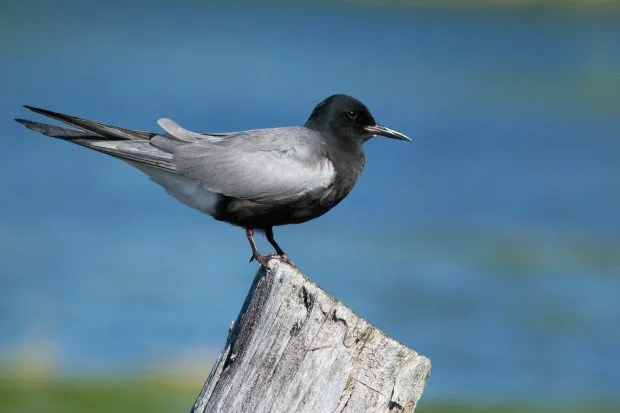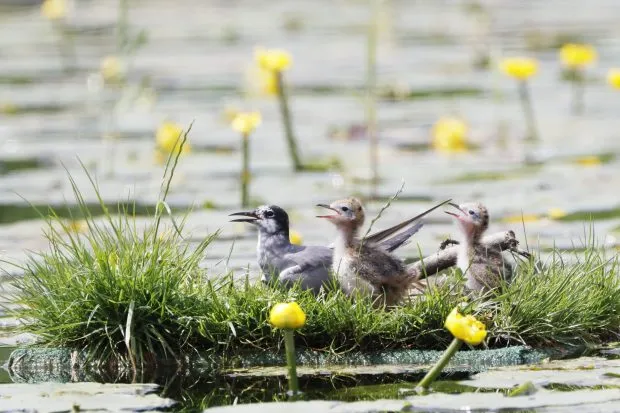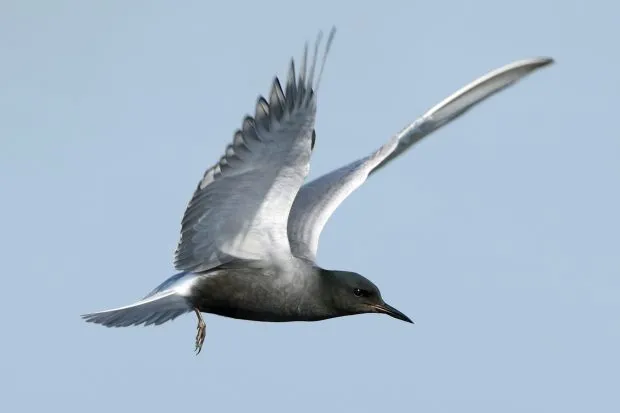The black tern (Chlidonias niger) is very much the 'other' tern of the UK, not least because it doesn’t normally breed here. It is one of a group known as the 'marsh terns', named for breeding in freshwater habitats, such as marshes.
It is a passage migrant only in the UK, seen from May to September.
In this guide we take a closer look at the black tern, including what they look like, migration patterns, habitat and distribution.
Interested in learning more about Britain’s seabirds? Check out our guides to puffins, gannets and auks.
Terns of Britain
Arctic terns, common terns and little terns grace Britain’s shores in the summers months. Learn how to identify them – and other tern species – with BBC Countryfile Magazine’s guide to terns.

Black tern identification
The black tern is smaller than a common tern, with long wings but a very short tail in comparison.
In summer it’s gorgeous, with beautiful inky-black body plumage and paler grey wings, as well as red legs.
In autumn and winter, it is distinctively blackish, with a black cap and hood behind the eye. In common with other terns it is typically sociable, not just nesting in colonies, but also generally travelling in small parties during the non-breeding season.

Black tern nesting habits
Black terns are 'marsh terns', named for breeding in freshwater habitats, such as marshes. Common terns also do this, but they nest on solid surfaces, while black terns have the intriguing habit of nesting on floating vegetation, such as waterlilies, and their eggs have special shells adapted to getting damp. Things often go wrong!

Black tern feeding and diet
Black terns take many more insects than any other tern. Typically, you see them flying buoyantly low over fresh water, jinking one way and then the next, then suddenly dipping down to snap up a damselfly or other aquatic insect from close to the surface. They will ply a beat over a rich source of food relentlessly.
Then, oddly, they transfer their freshwater existence for a saltwater one, spending months out at sea through the winter, in the tern-rich waters off the west coast of Africa.

Black tern distribution and habitat
The black tern is a difficult bird to see in Britain, really only spotted on passage in May and early June, and then again from August onwards. It often visits reservoirs, but also passes sheltered coasts.
Seabirds of Britain
Discover some of the UK’s most common types of seabird, where they live and the best places to see them with BBC Countryfile Magazine‘s guide to seabirds.

